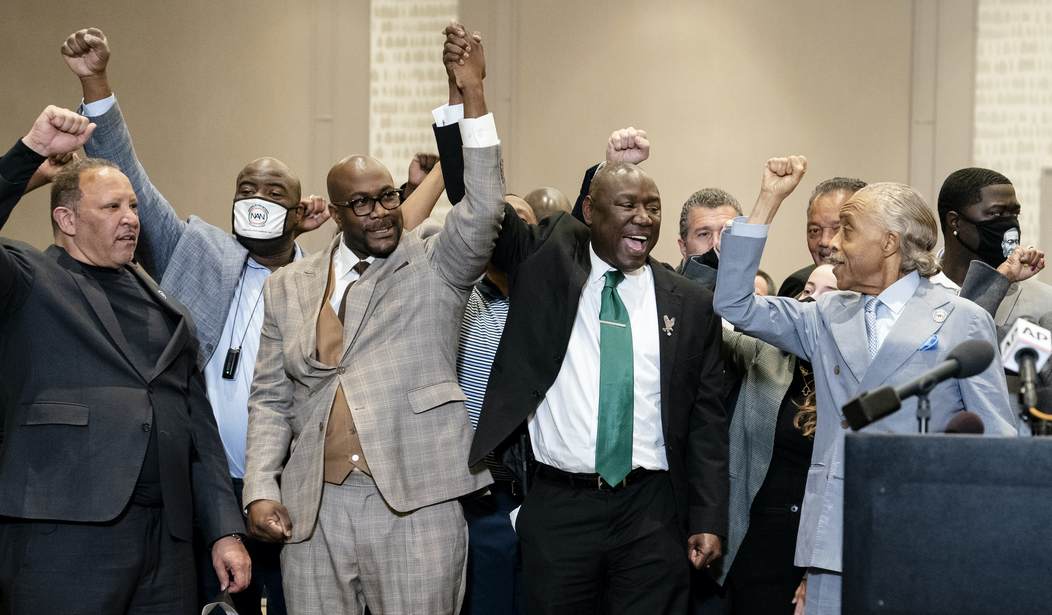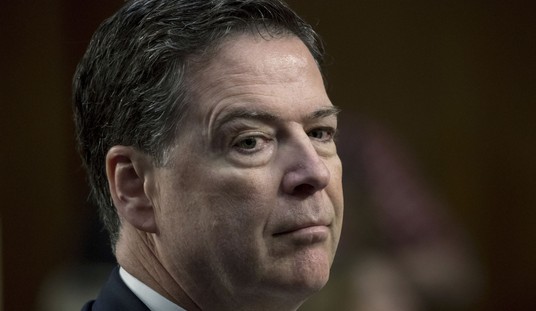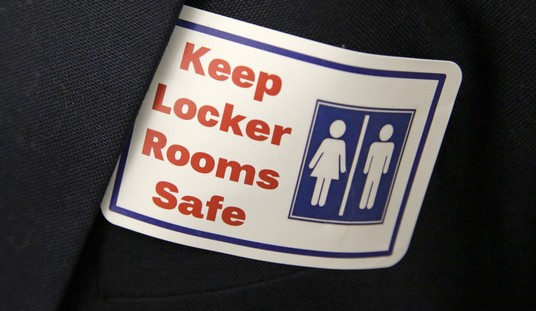Former Minneapolis police officer Derek Chauvin has moved for a new trial in the killing of George Floyd after yet another juror admitted bias in the case. But that’s only part of the reason why the former cop may get a new trial.
A photo of “Juror 52” wearing a George Floyd and Derek Chauvin t-shirts while on a trip to Washington, D.C., for a rally commemorating Dr. Martin Luther King’s March on Washington was discovered on social media. The shirt featured a photo of Chauvin and Floyd and read “get your knee off our necks.” He was also wearing a Black Lives Matter baseball cap. George Floyd’s sister and brother were among the featured speakers at the march.
The march was held during the “summer of love” George Floyd anti-police riots that burned parts of several American cities.
An alternate juror also spoke to the media after the trial and appears to have missed the entire defense case and was afraid of making the wrong decision and sparking more riots.
Juror reminder to self: when anonymous, don't go on TV and let world know I lied to get on jury. pic.twitter.com/ZcIZyb3g36
— Robert Barnes (@barnes_law) May 4, 2021
Brandon Mitchell is the most obvious reason why Chauvin deserves another shot at a fair trial, but there are eight more reasons why he should get one and they’re contained in the motion filed by Chauvin’s attorney Eric Nelson. People who closely followed the trial will recognize these.
Related: Chauvin Medical Defense Witness Is Now Being Investigated for Wrong-Think
1. Brandon Mitchell Lied
Brandon Mitchell answered on the jury questionnaire before he was selected that he had not participated in any protests about the case specifically nor any protests about “use of force or police brutality.” Going to a march in Washington, D.C., last summer during the riots to watch Floyd’s sister and brother, Philonise and Bridgett, speak with others against police brutality means that he lied about his interest in the case. His vow that he could remain neutral, though the jury took less than ten hours to decide a case that took three weeks to put on, is obviously suspect. Mitchell later said he didn’t even remember that shirt until he was seen wearing it on his podcast photo.
2. Change of Venue
The trial court judge, Peter Cahill, though asked, refused to change the location of the trial from Minneapolis, the scene of riots, protests, looting, and arsons all in the name of George Floyd. The judge reasoned that all Minnesotans had heard about and watched the Chauvin–George Floyd video, so why not stay in the riot zone? Two jurors were dismissed for living in a riot zone and an alternate juror later said she was uncomfortable about the riots near the courthouse. It was tantamount to the judge reasoning, “Well, he won’t get a fair trial anywhere, so why don’t we give him a trial in the place where he’s least likely to get a fair one.” Ridiculous.
3. Publicity and Intimidation
Chauvin’s attorney called the publicity before and during the trial a fundamental “structural defect” in getting Chauvin a fair trial.
In the words of the motion, “Such publicity included post-testimony, but pre-deliberation, intimidation of the defense’s expert witnesses from which the jury was not insulated. Not only did such acts escalate the potential for prejudice in these proceedings, they may result in a far-reaching chilling effect on defendants’ ability to procure expert witness especially in high-profile cases, such as those of Mr. Chauvin’s co-defendants to testify on their behalf. The publicity here was so pervasive and so prejudicial before and during this trial that it amounted to a structural defect in the proceedings.”
To which I would only add: duh.
Related: Did Wrecking Ball Maxine Waters Give Derek Chauvin Grounds for an Appeal?
4. Juror Sequestration
The only thing sequestered was Judge Cahill’s powers of observation. Cahill apparently wasn’t up to speed on these new-fangled things called smartphones that feed users endless notifications about stories of all kinds. Jurors were told not to read and watch the news about the trial, but were never told to put away their smartphones until jury deliberations started.
And that wasn’t the half of it. Every single day of the three-week-long trial jurors got a fresh reminder of what was at stake by having to walk through a gauntlet of security to keep out rioters. School was canceled. Riots broke out in the nearby Brooklyn Center, where two of the jurors lived (one was dismissed, one was an alternate who was blocked by protesters in an attempt to get home). The former juror said, “I did not want to go through rioting and destruction again and I was concerned about people coming to my house if they were not happy with the verdict.” You don’t say?
The judge gave the jury a three-day weekend leading up to the deliberations in order to, paraphrasing here, give them a last free period to fully appreciate the complexity of the case. That weekend there were violent riots over another police killing and Rep. Maxine Waters called for more riots if the jurors didn’t vote “guilty, guilty, guilty.” And minutes after she spoke, two National Guard troops were shot at.
The case that was so “complex” took jurors less than ten hours to find him guilty, guilty, guilty of all charges.
Chauvin’s lawyer had requested the jury be sequestered for the entire trial. It’s a tough call for a judge to do that to people, but justice probably demanded it.
5. Prosecutorial Misconduct
Wait, the prosecutors in the Chauvin case were Keith Ellison’s hand-picked members of a dream team, right? What prosecutorial misconduct could possibly have taken place? Plenty. In fact, it was so egregious at periods that criminal trial attorneys who wanted Chauvin to fry were outraged.
It turns out that you can’t call the defense attorney a liar over and over and over again in closing arguments, as prosecutor Jerry Blackwell did in his rebuttal. The outrageous ploy – the last thing heard from attorneys before the case went to the jury – prompted multiple objections by Chauvin’s attorney, an admonition from the judge (during closing arguments!), and a move for a mistrial, which was denied. Blackwell, a civil attorney, apparently didn’t know – or didn’t want to know – that you can’t do that in a criminal trial. Attorney Andrew Branca counted more than 20 times Blackwell called Eric Nelson a liar or similar characterization in his closing argument.
But, though that’s bad, prosecutors showed bad faith in their document dumps during the trial. The 14 attorneys plus their unlimited staffs had months to provide documents to the defense. Their witness list contained 400 names, which no single attorney could cull through. They dumped tens of thousands of documents on the defense during the trial, and another 5,000 that were released during the defense case on the sole attorney. One of the dumps came the night before a pivotal medical expert testified. Judging by Nelson’s demeanor the next day, he must have stayed up all night preparing for the witness.
I’m pretty sure this isn’t what is meant when you think of “justice.”
Related:Who Are the Jurors in the George Floyd Case – and Are They Safe?
6. George Floyd’s Drug Dealer
The man riding in the Mercedes SUV passing fake $20 bills on the day George Floyd died was none other than Floyd’s purported drug dealer, Morries Hall. Hall, a man who had his own legal problems for obvious reasons, was likely the one who provided Floyd the combination fentanyl and meth tablet seen in Floyd’s mouth and in the squad car and Floyd’s car during his arrest. Hall was allowed to skip testifying in the case, taking the fifth because he might have been implicated himself in Floyd’s death.
One might think that bit of knowledge would have been helpful to Chauvin’s defense, and one would be right. However, the judge let him skip all testimony. Chauvin’s attorney wanted a chance to question Hall with judge-imposed limits, but the man who may have been pivotal in the case was allowed to go back to his jail cell without testifying.
7. Jury Instructions
Eric Nelson says in his motion that the judge in the case “failed to accurately reflect the law with respect to unintentional second degree murder, third degree murder and authorized use of force.”
Jury instructions — not that this jury actually internalized them — are the Rosetta Stone of how jurors go about the job of applying the law to the facts of a case. This case was so complex that even the charges didn’t make sense. The third-degree murder charge was still in dispute between the trial judge, an appeals court, and the state supreme court. The law pertaining to endangering groups of people clearly didn’t apply to this case. Still, this jury somehow applied the facts of this case to that law and found Chauvin “guilty, guilty, guilty!”
8. Crying and Cumulative Witnesses
If you’re like most people, you probably think more is better. More hot sauce on the nachos, more fudge sauce on the ice cream, more syrup on the pancakes. But more is not allowable in a criminal court case. As attorney Andrew Branca has observed, you can’t ask all 45,000 people in the stadium what they saw. It’s repetitive and adds no new insight. And so it is with this case.
In the first week of testimony, the prosecution put on multiple witnesses who were there the day George Floyd died. They all cried and were asked by a prosecutor “how did it make you feel?” Over and over again. The cumulative effect of such witnesses can overwhelm and prejudice juries.
Another tranche of witnesses consisted of medical experts. The medical experts all agreed that Floyd’s oversized heart, near-full blockages of his arteries going and coming from his heart, COVID, years of drug abuse, being high on an amount of drugs that would kill most people (and nearly killed Floyd weeks before) had nothing whatsoever to do with his death on May 25, 2020. It was alllll Chauvin’s knee on his neck the whole time. Whoops, not his neck the whole time? Oh, I meant Chauvin’s knee on his shoulder. No, wait, on his back. Oh, the prone position must have done it!
One expert even testified that smoking cigarettes, using fentanyl and other illegal drugs were really not all that bad for you – and did you know that people with more fentanyl in their systems than George Floyd were out driving cars just fine? Sure, that’s baloney, but that kind of testimony was allowed to overwhelm the testimony of the only medical expert who had actually examined Floyd’s body. The only medical expert who’d autopsied George Floyd’s body said he would have ruled it a drug overdose, all things being equal.
Related: Officer Chauvin’s Knee Was NOT on George Floyd’s ‘Neck’ and 8 Other Things You Didn’t Know About This Case
Of course, his testimony was drowned out, as planned, amid the cumulative impact of medical experts who’d said smoking was totally fine for 90% of the people who do it.
The judge allowed it, the jury bought it.
The other two bases for a new trial cited by Nelson were the judge’s failure to require that sidebar meetings between attorneys and the judge be put on the record and allowing the prosecutors to ask leading questions in their direct examination of their witnesses, which is a legal bozo-no-no.
There was so much wrong with Chauvin’s trial and the milieu in which it was held that while people may have thought the verdict was right, it just wasn’t. Not even close.










Join the conversation as a VIP Member